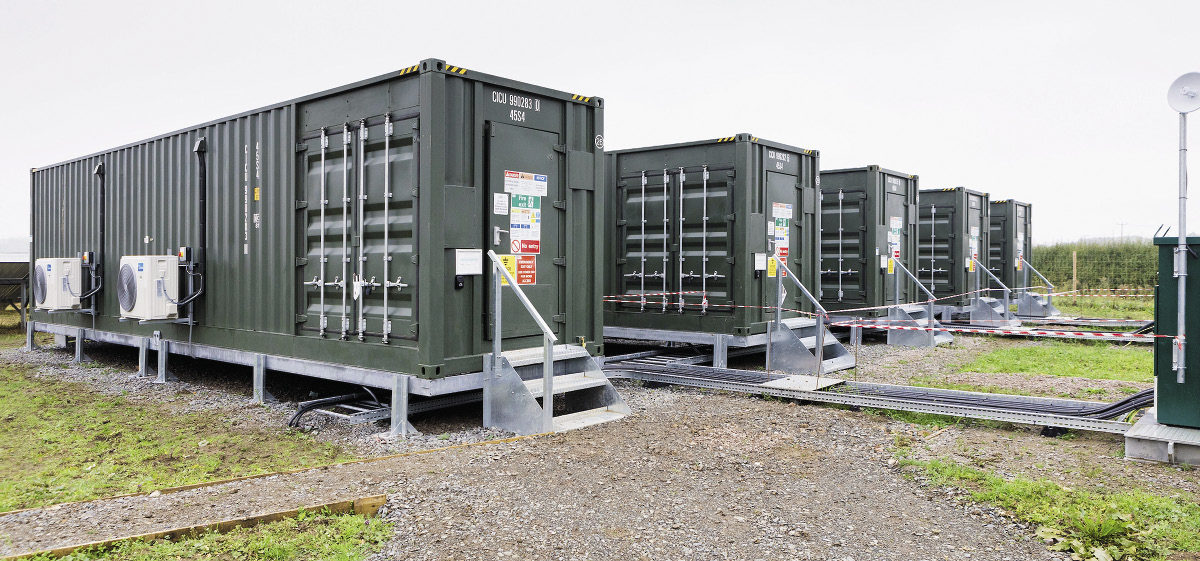Great to be in Offaly this morning turning the sod on 2 new €150m battery storage facilities. This is an important step in our transition away from an electricity sector dependent on fossil fuels to renewable https://t.co/WGYfIb1anq pic.twitter.com/xcPrQU3lWZ
— Richard Bruton (@RichardbrutonTD) September 4, 2019
With that tweet, Ireland’s minister for communications, climate action and environment, Richard Bruton, welcomed the beginning of construction of a 200 MW storage project planned in County Offaly, in Leinster province in the east of Ireland.
The project consists of two 100 MW lithium-ion storage units near the municipalities of Ferbane and Shannonbridge, Irish broadcaster RTE revealed. The developer is Korea-based Hanwha Energy Corporation, the parent company of module maker Hanwha Q Cells, and Irish company Lumcloon Energy Limited is a partner on the project.
The storage facility is intended to secure power supply for the country’s future energy grid, which is expected to accommodate a rising share of renewable energy generation. The Irish solar sector has in recent times seen more large scale development activity.
Grid balancing
Lumcloon Energy Limited announced the project with Hanwha in April 2018. “Together with our partners Hanwha and a second Korean company, LSIS, this project solves the energy supply risks from the wide variability of wind power as we increase our reliance and dependency on renewables,” Lumcloon CEO Nigel Reams said at the time. “This project will provide essential back-up for Ireland’s rapidly expanding renewable energy sector and benefit consumers and business alike.”
Ireland’s main grid operator, Eirgrid, began its multi-year Delivering a Secure, Sustainable Electricity System program in 2011. The scheme is intended to provide stable and efficient grid management measures and is crucial to meeting the country’s target of generating 40% of its electricity from renewable sources by next year. As a part of the initiative, Eirgrid last September launched a tender for 140 MW of storage capacity.
In April, German renewable energy company Innogy – which has planned several hundred megawatts of wind power generation capacity in Ireland – announced plans to deploy battery storage facilities in the counties of Dublin, Meath and Monaghan.
According to the International Renewable Energy Agency, Ireland had a pumped storage capacity of 292 MW at the end of last year. Its installed hydropower capacity stood at 529 MW while solar and wind had shares of 29 MW and 3,518 MW, respectively. Fossil fuels still meet around half of Ireland’s power demand.
This article was amended to indicate Ireland had 29 MW of solar generation capacity at the end of last year and 3,518 MW of wind power, rather than the other way round, as originally stated.
This content is protected by copyright and may not be reused. If you want to cooperate with us and would like to reuse some of our content, please contact: editors@pv-magazine.com.




What is the duration of this 200 MW energy storage plant? Energy is measured in MWh not in MW. MW is power. Power over time is energy (MWh)
Hi Michael,
We’ve had this issue crop up before so I made enquiries to ensure we were not short-changing our readers. Wherever possible at pv magazine we try to give both figures when reporting on storage: MW and MWh, which obviously differ. However, the U.S. Energy Department, which reports its storage project figures solely in MW, has assured us this is a perfectly accepted way of conveying the size of a storage facility so, when we do not have the MWh figure and cannot get it from the relevant contact, we will report solely the MW figure.
Just a heads up, the solar and wind capacities noted at the end here are flipped. Wind share is about 3.5GW while the amount of solar energy in Ireland is currently negligable, not the other way around.
Thanks Sean, the article has now been amended.